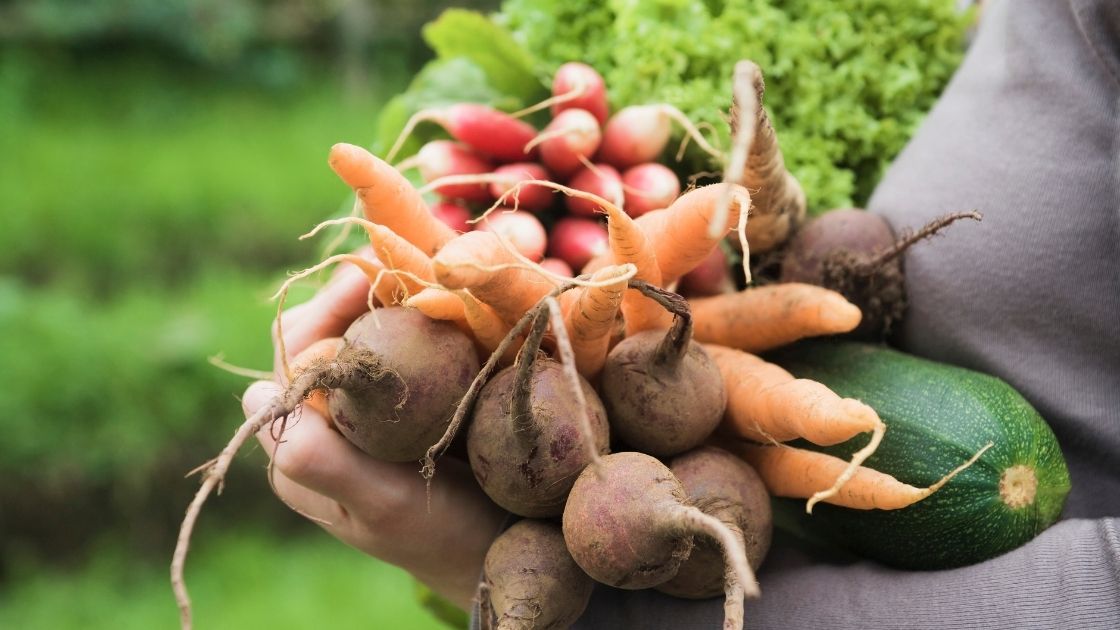While histamine is an important chemical compound for several bodily functions, too much of it can leave you struggling with headaches, stomach pain, hives, and various other symptoms of histamine intolerance.
Histamine intolerance can be exacerbated for people with certain genetic variants because of a decreased ability to break down histamine from food. A low-histamine diet is a good place to start in understanding your reactions to high histamine foods.
Companion article: Histamine Intolerance & Genetics: Check Your 23andMe Raw Data
Below are examples of low-histamine foods categorized by type, as well as several recipes that prioritize these low-histamine foods.
Vegetables
- Asparagus
- Beet Root
- Bell Pepper
- Bok Choi
- Carrot
- Cauliflower
- Cucumber
- Lettuce
- Squash
- Zucchini
Eggs and Dairy
- Cream cheese
- Egg yolks
- Goat’s milk
- Mascarpone cheese
- Milk
- Mozzarella cheese
- Sweet cream
- Sweet cream butter
- Ricotta
Oils
- Canola oil
- Coconut oil
- Olive oil
Fruits
- Apples
- Apricots
- Blackberries
- Blueberries
- Cherries
- Coconuts
- Grapes
- Peaches
- Persimmon
- Pomegranates
Meat and Fish
- Fresh Beef*
- Chicken
- Quail
- Turkey
- Veal
- Fresh Fish
*For beef and fish, the histamine level is dependent on the food’s freshness.[ref]
Grains and Starches
- Millet
- Oats
- Potato
- Quinoa
- Rice
- Sweet Corn
- Sweet Potatoes
Nuts and Seeds
- Chia seeds
- Macadamia nuts
- Pistachios
- Pumpkins seeds
- Hemps seeds
Herbs and Spices
- Basil
- Cinnamon
- Mint
- Oregano
- Parsley
- Rosemary
- Sage
- Sweet paprika
- Thyme
- Turmeric
For more information on histamine levels in foods, check out this comprehensive list compiled by mastzellaktivierung.info. This is a valuable resource that you may want to print out for future reference. Additionally, the Swiss Interest Group Histamine Intolerance (SIGHI) has a leaflet that contrasts well-tolerated low-histamine foods and high-histamine foods to avoid.
Recipe ideas for a low-histamine diet
Finding specifically low-histamine recipes can be a little tricky, but recipes that include low-histamine foods are a good place to start. From there, you can easily modify recipes to exclude any high-histamine foods.
When modifying recipes for a low-histamine diet, it is important to be able to recognize some of the more common high-histamine foods that show up in recipes, including:
- Tomato
- Garlic
- Peanuts
- Soy
- Spinach
- Citrus fruit
- Pepper
- Certain kinds of vinegar
Check out the recipes below for inspiration and example modifications!
Tuscan Kale Salad:
Spice up your boring salads with Vicki Bensinger’s Tuscan kale salad with roasted butternut squash & beets, which is packed with low-histamine veggies.*
*You can omit the red onion to make it low-histamine.
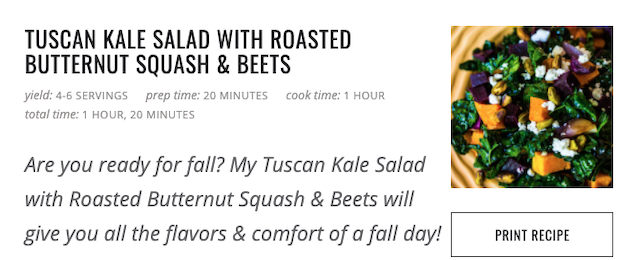
Baked Peach and Coconut Oatmeal:
Looking for a new morning favorite? Try this Baked Peach and Coconut Oatmeal for a low-histamine breakfast!
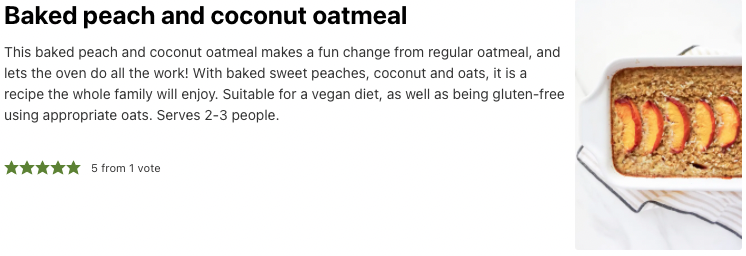
Tumeric Coconut Rice:
Pair this Vibrant Turmeric Coconut Rice From Andrea Nguyen with your favorite fresh fish for a low-histamine meal.
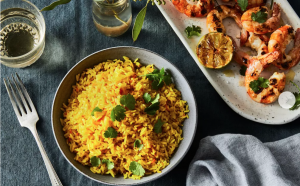
Steak Bites with Sweet Potatoes and Peppers:
These steak bites with sweet potatoes and peppers are a delicious, low-histamine dinner that can be prepared in one pan!*
*You can omit the garlic to make it low-histamine.
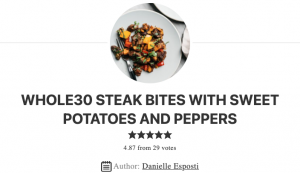
Rosemary Roasted Potatoes and Asparagus:
Rosemary roasted potatoes and asparagus are a great low-histamine side dish to go with any meal.*
*You can omit the garlic to make it low histamine.
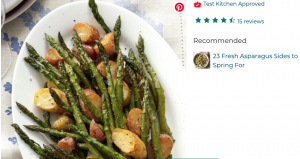
References:
Comas-Basté, Oriol, et al. “Histamine Intolerance: The Current State of the Art.” Biomolecules, vol. 10, no. 8, Aug. 2020, p. 1181. PubMed Central, https://doi.org/10.3390/biom10081181.
Food Compatibility List Histamine. Swiss Interest Group Histamine Intolerance (SIGHI), 1 Apr. 2016, https://www.mastzellaktivierung.info/downloads/foodlist/21_FoodList_EN_alphabetic_withCateg.pdf.
SIGHI-Leaflet Histamine Elimination Diet. Swiss Interest Group Histamine Intolerance, 20 July 2020, https://www.histaminintoleranz.ch/downloads/SIGHI-Leaflet_HistamineEliminationDiet.pdf.
Maintz, Laura, and Natalija Novak. “Histamine and Histamine Intolerance.” The American Journal of Clinical Nutrition, vol. 85, no. 5, May 2007, pp. 1185–96. Silverchair, https://doi.org/10.1093/ajcn/85.5.1185.

